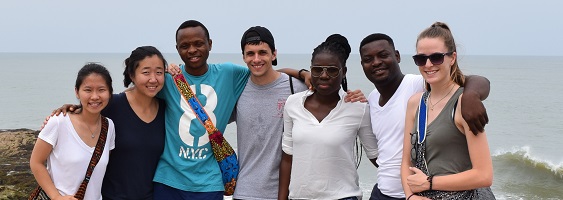

Discover the Profile of Ghana
About Ghana
Location & Country Facts
The Republic of Ghana (formerly the Gold Coast) lies on the Gulf of Guinea, on the western coast of tropical Africa, bisected by the Greenwich Meridian. The country lies within GMT zone.
Ghana extends from 672km north to south between latitudes 4.5† North and 11† North and from 536km East to West between longitudes 3† West and 1o East. It is bordered to the West by Cote d'Ivoire, to the North by Burkina Faso, to the East by Togo and to the South by the Atlantic Ocean.
Ghana has a total land area of 239, 460km2, equivalent to that of Great Britain or the state of Oregon in the USA. The population of Ghana is approximately 22 million. The majority of the population is concentrated in the southern and central part of the country, with Greater Accra the most densely populated region. The northern three regions, despite covering more than 40% of the national surface, support only 25% of Ghana's population.
About Ghana
Capital & Administrative Regions
The capital of Ghana is Accra, situated on the Atlantic coast about 25km West of the Greenwich meridian.
The current population of Accra is just under 2 million people.
The second largest city in the country is Kumasi, the former capital of the Ashanti Empire.
Ghana is divided into ten administrative regions: Upper West, Upper East, Northern, Brong-Ahafo, Volta, Ashanti, Western, Central, Eastern and Greater Accra.
About Ghana
Climate
Ghana has a typically tropical climate. Daytime temperatures are high, approaching or topping 30oC on most days but fall at night.
Temperatures are reasonably consistent throughout the year. The main seasonal factor is rain, which falls almost exclusively between April-September, peaking in May and June.
Another phenomenon in Ghana is the arrival of the Harmattan winds that blow from the northeast during the dry season.
They bring dust from the Sahara and reduce visibility to as little as 1km. They generally come in late November or early December and continue until March.
About Ghana
Famous Ghanaians
Kofi Annan, UN Secretary General 1997-2007
Michael Essien , Chelsea Football Club
Marcel Desailly, Ghana-born French footballer<
Paul Boateng, British politician
Kwame Nkrumah, founder of Pan-Africanism
Hugh Quarshie, British Actor
Ama Ata Aidoo, writer
About Ghana
Flag, Language & Religion
The national flag consists of three horizontal stripes -red, yellow and green from top to bottom-with a black star in the middle of the yellow stripe. The red band represents the blood of the nation's freedom fighters, the yellow its mineral wealth and the green its forest.
English is the official national language but there are a total of at least 75 African languages and dialects spoken in Ghana, generally divided into the Akan, Mole-Dagbani, Ewe and Ga language groups. Twi is the main Akan tongue and spoken by roughly half the population, including the Ashanti and Fante.
Freedom of religion is a constitutional right in Ghana. It is thought that about 60% of Ghanaians are Christian and at least 25% Muslim. Minority religions include various traditional faiths, Bahai, Hinduism and Buddhism. Islam is the predominant faith in the north, having reached West Africa via the trans-Saharan trade routes as early as the eighth century AD. Christianity dominates in the southern and central parts of the country, with Catholicism first introduced by the Portuguese in the late 15th century.
About Ghana
History – Origin
The area in which modern day Ghana lies was inhabited by humans at least as long as 300,000 years ago, though current understanding of human movements would suggest that the area had been occupied for millions of years before. The earliest peoples were hunter-gatherers, with agriculture and pastoralism adopted widely by around 5000 BC. According to oral traditions most modern Ghanaian population groups migrated to their present homelands from elsewhere in West Africa, moving into a territory occupied by the Guan who are regarded as the true aboriginals of modern Ghana.
The modern republic of Ghana takes its name from the Ancient state of Ghana, which actually lay to the north of modern Ghana. Ancient Ghana was founded between AD 300 -AD 700 by Mande speakers and was a powerful centralized trading empire that effectively acted as the ‘’middleman’ between areas south of the Sahel and north of the Sahara. Ancient Ghana eventually fissured and collapsed in around the thirteenth century, and was taken over by the Ancient Mali Empire founded by the Mandinka people. The area retained its role within the north-south trade routes and by the medieval era, the rainforest belt of modern Ghana was established as one of the West Africa region’s richest sources of gold.
About Ghana
People of Ghana
The people of modern Ghana are generally divided into four main regional groupings, each of which shares a similar language and culture. The Mole-Dagbani of the Northern Region were the first to establish their approximate modern territory, migrating from the Lake Chad region in the thirteenth century to establish the Mamprusi kingdom at Gambaga. The area to the east of lake Volta is inhabited by the Ewe, fifteenth century migrants from eastern Nigeria. Ewe society is the least centralized of any in modern Ghana and each of the roughly 130 small Ewe chieftaincies is entirely autonomous. The other important grouping of the east is the Ga-Adangbe, made up of the Ga people of the Accra coastal plain and the Adangbe of Ada and Somanya. Like the Ewe, the Ga-Adangbe are originally from eastern Nigeria.
The most significant population group in modern Ghana, territorially and numerically is the Akan. The Akans of the southern and central part of the country embrace several dozen culturally similar and historically allied peoples, the best known of which are the Ashanti of the Kumasi area and the Fante of the central coast. The Akan comprise more than half of modern Ghana’s population and inhabit five of its ten administrative regions: Western, Central, Eastern, Ashanti and Brong-Ahafo. Although every Akan village has its own chief, political centralization into larger kingdoms has been a recurrent feature of Akan history, from the fourteenth century Bono kingdom of Techiman to recent entities such as Ashanti and Fante. The Akan are thought to have migrated to modern Ghana from the Sahel.
About Ghana
European Arrival and the Gold Trade
The people of modern Ghana are generally divided into four main regional groupings, each of which shares a similar language and culture. The Mole-Dagbani of the Northern Region were the first to establish their approximate modern territory, migrating from the Lake Chad region in the thirteenth century to establish the Mamprusi kingdom at Gambaga. The area to the east of lake Volta is inhabited by the Ewe, fifteenth century migrants from eastern Nigeria. Ewe society is the least centralized of any in modern Ghana and each of the roughly 130 small Ewe chieftaincies is entirely autonomous. The other important grouping of the east is the Ga-Adangbe, made up of the Ga people of the Accra coastal plain and the Adangbe of Ada and Somanya. Like the Ewe, the Ga-Adangbe are originally from eastern Nigeria.
The most significant population group in modern Ghana, territorially and numerically is the Akan. The Akans of the southern and central part of the country embrace several dozen culturally similar and historically allied peoples, the best known of which are the Ashanti of the Kumasi area and the Fante of the central coast. The Akan comprise more than half of modern Ghana’s population and inhabit five of its ten administrative regions: Western, Central, Eastern, Ashanti and Brong-Ahafo. Although every Akan village has its own chief, political centralization into larger kingdoms has been a recurrent feature of Akan history, from the fourteenth century Bono kingdom of Techiman to recent entities such as Ashanti and Fante. The Akan are thought to have migrated to modern Ghana from the Sahel.
About Ghana
Slave Trade
The transatlantic slave trade is a singular event in human history, operating on an unprecedented scale and with shattering and wide ranging effects. It is estimated that between 12 and 20 million Africans were transported across the Atlantic between the late seventeenth and early nineteenth centuries, with conditions so bad on the ships during the five-week crossing that it was not unusual for over half of the human cargo to perish. The slave trade had a devastating effect on African society. It destroyed traditional industries such as iron and gold smelting, established an arms race between neighbouring groups and above all removed several generations of able-bodied men and women. The trade was eventually abolished by Britain in 1833, France in 1848, USA in 1865 and Brazil in 1888.
About Ghana
Ghana – Nineteenth Century to Colonialism
The Nkrumah era was characterized by President Nkrumah’s vision of Ghana as the pioneering state in Africa and a dream of African unity. Under the Nkrumah government vast improvements were made to the country’s transport network, the Akosombo dam was constructed along with a deep-water harbour at Tema and the education system was expanded to become one of the best in Africa. Nkrumah was eventually deposed in 1966 by the military in response to his government’s harsh criticism and treatment of political detainees. From 1966-1969 Ghana was ruled by the military National Liberation Council under the leadership of Lieutenant General Ankra and Brigadier Afrifa, a regime that did much to restore democracy, free speech and a free press. In 1969 elections were held and won by Dr. Busia leader of the Progress Party (PP). However, Dr. Busia was removed by a coup that followed a period of economic instability and massive inflation. There followed a six-year presidency of General Acheampong, which was ended by a coup led by Flight Lieutenant Rawlings, who pledged to end the corruption and political repression that had developed.
Having established a civilian government, Rawlings seized back power in 1981 when the government demonstrated as much corruption as that before it. Rawlings was able initially to stabilize government at a local and national level, and in his early years of rule enabled unprecedented levels of economic growth. However by 1990 the situation had deteriorated and become highly unstable as groups campaigned for free and fair multi party elections and an end to repression of political criticism. In 1992 elections were held and won by Rawlings with a clear majority and the following years saw many positive developments on the economic front as well as an increased level of political freedom. In 2000 a momentous election took place, when power was transferred for the first time peacefully in Ghana, from Rawlings to John Kufuor, leader of the former opposition party, the NPP. There was widespread support for President Kufuor who was seen as leading Ghana through the transition from a period of consolidating democracy, to a time where democracy is an inherent part of the political process. John Agyekum Kufuor, known as the Gentle Giant, served a second term, this ended in 2008.
A presidential election was held in Ghana on 7 th December, 2008, at the same time as a parliamentary election. However, as no candidate received more than 50% of the votes; a run-off was held on 28 th December, 2008 between the two candidates who got the most votes, Nana Akufo-Addo and John Atta-Mills. John Atta-Mills emerged as the victor in the run-off elections on 3 rd January, 2009, by less than 1% margin. He was sworn in on 7 th January, 2009 as Ghana’s third democratically elected President The political transition has proceeded peacefully and is seen as a major achievement for the region. Ghana is a shining example of Democracy in Africa.
Money:
The cedi is the unit of currency of Ghana. One cedi is divided into one hundred pesewas. The present cedi was introduced on July 3, 2007, and was equal to 10,000 old cedi when redenomination saw four zeros lopped off the value.
Ghana is not generally an expensive country in which to stay, but volunteers should be aware that certain amenities that foreigners are accustomed too, such as water and imported commodities, are expensive in Ghana. We strongly recommend that volunteers bring hard currency cash, rather than travelers checks or credit cards because this is the most easy to exchange. The best exchange rate is for larger bills. Credit cards are not widely accepted and obtaining a cash advance is a lengthy process. If you do bring a credit card, we recommend bringing VISA.
About Ghana
Ghana – 1957 to Present
The European powers maintained a commercial relationship with the chieftaincies of the Gold Coast until the late nineteenth century. In 1874 following a period of confrontations between the British, Dutch, Fante empire and Ashanti, in an attempt to settle the region, Britain declared the Gold Coast, a Crown colony. The Gold Coast colony was initially a fraction of the size of modern Ghana, and was extended by the British in the 1890’s during the European ‘Scramble for Africa’. In 1896 the British decided to expand the territory further and incorporate the Ashanti kingdom by seizing the capital of the empire, Kumasi. There followed the only major war against the British in Ghana, led by the Ashanti Princess, Nana Yaa Asantewa. The resistance was eventually quashed after 6 years of war, and the take over of Kumasi completed formally in 1902, joining the Ashanti Empire along with the territories that make up modern Ghana’s three northern regions into the Gold Coast colony.
The colony was run along the system of indirect rule, a system, which would effectively undermine traditional chieftaincies, and systems of election by the council of elders. The first resistance to colonial rule had emerged in 1897 and appeared in a more cohesive form in 1915 with the formation of the National Congress of British West Africa (NCBWA). World War Two proved to be decisive in the battle for independence. In total, 65, 000 African volunteers went from the Gold coast colony to fight in the European war, fighting for democratic ideals that they expected to benefit from on their return. Instead when they returned they faced unemployment and no change in their legal or democratic rights.
In 1947 the United Gold Coast Convention (UGCC) formed by Dr. Danquah made a demand to Britain for self-government in Gold Coast, and later that year, Dr. Kwame Nkrumah, the nationalist and pan-Africanist returned from the US to join the UGCC. The leadership of the UGCC were imprisoned until 1949 by the colonial administration in an attempt to control the UGCC and calm the rising instability. However, on his release Dr. Nkrumah formed the more radical Convention People’s Party (CPP) who organized strikes and ballots in an attempt to make the colony ungovernable. In 1951 the colonial administration relented to public demands, allowing 36 seats in government to be elected and in March 1952 Nkrumah became the Gold Coast’s first African prime minister. Nkrumah continued to lobby for the Gold Coast’s full independence, which was finally achieved on 6th March 1957 when Ghana became the first African colony to be granted independence.










